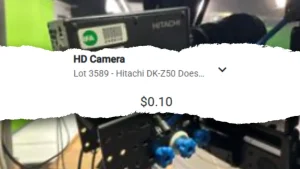Zcash’s Remarkable Price Surge Masks Questions About Actual User Adoption
Privacy Coin Outperforms Major Cryptocurrencies Despite Limited Visible Growth in User Base
In a cryptocurrency market characterized by volatility and shifting investor sentiment, Zcash (ZEC) has emerged as one of the standout performers of the year, demonstrating remarkable resilience even during recent market downturns that affected industry heavyweights like Bitcoin and Ethereum. Trading at approximately $657.99, ZEC has delivered impressive returns to investors who placed their faith in the privacy-focused cryptocurrency. However, a deeper analysis reveals a puzzling disconnect between Zcash’s price performance and measurable user adoption metrics, raising important questions about the sustainability of its current valuation.
The unique privacy architecture of Zcash creates significant challenges for analysts attempting to evaluate its true adoption through conventional blockchain analytics. Unlike most cryptocurrencies that maintain transparent ledgers, Zcash employs a hybrid approach that supports both transparent and shielded transactions. While transparent transactions function similarly to Bitcoin’s visible transaction flow, shielded transactions operate within specialized privacy pools where addresses, transaction amounts, and fund movements become entirely invisible to external observers. This fundamental design feature means that traditional blockchain metrics primarily capture exchange-related activities rather than providing insight into Zcash’s comprehensive user ecosystem. The significant migration toward shielded transactions—with over 4 million ZEC now residing in shielded pools compared to approximately 1.2 million several years ago—suggests that an increasing proportion of network activity occurs beyond the reach of conventional analytics.
The Inscription Wave: A Temporary Spike Without Sustained Growth
The most notable surge in observable Zcash network activity came from a phenomenon known as “Zerdinals”—a brief wave of blockchain inscriptions that temporarily pushed daily transaction counts above 70,000. However, closer examination of this spike reveals characteristics that undermine its significance as an indicator of genuine user growth. Throughout this period, the number of transparent senders remained confined to a relatively narrow range of 8,000 to 14,000, strongly suggesting that the transaction spike originated from a small cluster of highly active participants rather than from an influx of new users. Once the inscription trend subsided, network transaction volumes promptly reverted to their previous levels, further reinforcing the assessment that this activity represented a transient phenomenon rather than sustainable user adoption. This pattern reflects a common challenge in cryptocurrency analysis: distinguishing between genuine user growth and speculative or promotional activities that can temporarily inflate on-chain metrics without contributing to long-term ecosystem development.
While direct measurement of shielded activity remains impossible by design, comparative analysis with other privacy-focused cryptocurrencies provides valuable context. Monero (XMR), widely recognized as the dominant pure-privacy digital asset, offers a particularly useful reference point since its protocol counts all transactions while maintaining complete privacy for users. Despite Zcash’s remarkable price performance, Monero’s transaction volume has consistently remained within its established range of 20,000 to 30,000 daily transactions, showing no parallel increase in activity. This stability strongly suggests that Zcash’s price movement is not reflective of a broader shift toward privacy coins as an asset category but instead represents a Zcash-specific phenomenon driven by its unique market dynamics. The most compelling explanation for this disconnect appears to be a supply-side phenomenon: approximately 30% of the total Zcash supply now resides in shielded addresses that cannot be held on exchanges, creating a significant supply squeeze that amplifies price movements beyond what visible network activity would justify.
Technological Evolution Driving Privacy Adoption
Despite questions surrounding user growth, Zcash has made substantial technical progress in enhancing its privacy infrastructure. The implementation of the Orchard shielded pool represents a significant advancement in the cryptocurrency’s privacy capabilities, while innovations like Unified Addresses, auto-shielding mechanisms, and the privacy-by-default user experience offered by the Zashi wallet have collectively contributed to pushing more transactions into shielded environments. These developments indicate genuine progress toward Zcash’s core mission of providing robust financial privacy, even if their effects remain largely invisible in transparent blockchain metrics. The increasing proportion of fully shielded transactions reaching record levels demonstrates that the project’s privacy-focused technological roadmap is successfully transitioning users toward more secure transaction methods, creating value that extends beyond simple price appreciation or transaction counts.
The contrast between Zcash’s technological evolution and its visible adoption metrics highlights a fundamental challenge for privacy-focused cryptocurrencies: success in achieving their core privacy objectives necessarily reduces the availability of data that could validate their adoption. This creates a market information asymmetry where traders must make decisions with incomplete data, potentially leading to price dynamics divorced from underlying fundamentals. With approximately 30% of Zcash’s supply now effectively removed from exchange circulation through shielded addresses, the resulting supply constraints create market conditions where relatively modest buying pressure can produce outsized price movements. This supply-demand imbalance appears to be the primary driver behind Zcash’s exceptional price performance rather than demonstrable growth in its user base or transaction activity. Until private-side adoption trends can be corroborated through other metrics or user behavior patterns, investors should recognize that they may be paying a significant premium for ZEC based on supply dynamics rather than fundamental network growth.
Market Context: Major Cryptocurrency and Traditional Asset Movements
The broader cryptocurrency market continues to display mixed signals, with Bitcoin trading near $86,800 after relinquishing gains that had briefly pushed it above $93,000 following Nvidia-related market enthusiasm. Ethereum similarly faces downward pressure, hovering around $2,850 after dropping below the $2,900 threshold, with selling from FG Nexus contributing to the decline. Traditional safe-haven assets are experiencing their own volatility, with gold trading at approximately $4,077 after surrendering pre-NFP (Non-Farm Payroll) gains. Despite this pullback, the precious metal remains on track for an annual increase exceeding 50%, although it currently sits about 7% below its October peak. In Asian markets, Japan’s Nikkei 225 experienced a 1.58% decline as October inflation data exceeded expectations, strengthening the case for potential Bank of Japan interest rate increases, while officials expressed renewed concerns about the weakness of the yen.
As the cryptocurrency ecosystem continues evolving, regulatory developments remain a critical focus for market participants. Crypto lobbyists are actively engaging with the incoming Trump administration to advance industry priorities during a period of congressional uncertainty. Meanwhile, prominent investor Ray Dalio has acknowledged owning Bitcoin while expressing ongoing concerns about potential vulnerabilities related to quantum computing and central bank adoption policies. In the stablecoin space, MegaETH has announced plans to open a pre-deposit window for its USDm stablecoin next week, potentially introducing a new competitor in the increasingly important stablecoin market. These developments highlight the complex interplay between technological innovation, regulatory frameworks, and market dynamics that continue to shape the cryptocurrency landscape. For assets like Zcash, whose privacy features create inherent challenges for traditional analysis, investors must carefully weigh supply dynamics against uncertain adoption metrics when evaluating long-term potential.












